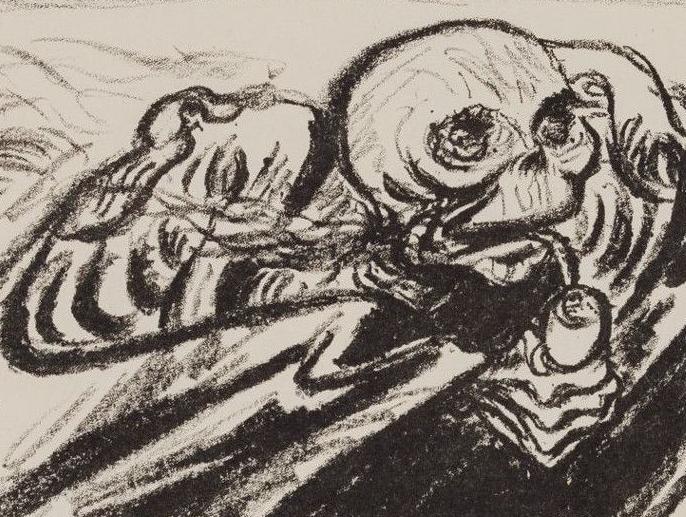Smoking a pipe while walking was, in Barlach’s time, an artistic symbol that indicated to a viewer a man was sophisticated, yet approachable. How fascinating it is the way that connotations morph throughout the years; when this author first saw the figure of death smoking a pipe, her thoughts immediately associated it with carcinogens and cancer, thoughts that never would have occurred to Barlach.
The artist’s own death of a heart attack at age sixty-eight in 1938, and his creation of Wandering Death itself, has always seemed both tragic and fortunate. While he escaped persecution by the Nazis, Barlach also did not see the ultimate destruction of Hitler, something his artwork aimed to promote.
In the wake of the past few years of global crises, however, Barlach’s lithograph also seems, well, ghoulishly comforting. The Western world survived the tragedies in Barlach’s time and, though death may be ever-present here in the twenty-first century, progress has undoubtedly been made.






























